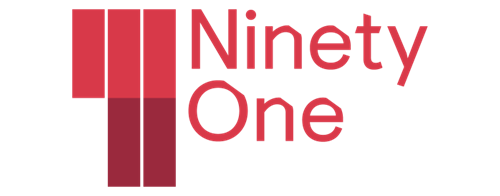Sahil Mahtani, Head of Macro Research, Ninety One
Ninety One has published the latest in its research series examining the strategic implications of shifting macro dynamics for the US dollar and global portfolio construction. The Shrinking Upside in the Dollar Story, contends that while past cycles were defined by an unambiguous American overweight, the next may be shaped by a structural rethink of that allocation norm.
“Since the global financial crisis, allocating to US assets has been the easy trade,” said Sahil Mahtani, Head of Macro Research, Ninety One. “Yet as 2025 unfolds, that consensus is being severely tested.” Washington’s growing embrace of tariffs, a deteriorating fiscal position, and a more transactional foreign policy posture are all reconfiguring the strategic foundation of US asset dominance.
Dollar cycles typically span 18 years and only turn when four structural forces — geopolitics, growth differentials, investment flows, and currency interventions — realign within a narrow window. That condition is now taking shape. While turning points are rare, Mahtani has identified three reasons suggesting upside risk for the dollar is shrinking due to: the dollar’s valuation, normalisation of unusually high US investment allocations, and shifting sentiment in the dollar’s global role. Trump could accelerate this trend by expanding fiscal deficits and compressing the US’s relative growth premium.
The US Dollar Is Now Extremely Expensive
The US dollar has appreciated over 40% since 2011, pushing valuations toward historically unsustainable levels — comparable to the peaks preceding the 1985 Plaza Accord and the 2001–2002 downturn. “Today’s ratios of PPP-based to USD-based GDP are at the highest levels in almost 25 years,” said Mahtani. On a purchasing power parity (PPP) basis, US GDP is equal to its nominal output, but China’s PPP GDP is double its nominal size, and India’s is four times larger.
“This overvaluation affects competitiveness. A further rise would exacerbate the growing competitiveness issue in the United States versus the rest of the world,” Mahtani continued. A 20–30% correction could bring the dollar more in line with global cost structures.
The Dollar Is Likely to Fall
Moreover, portfolio rebalancing, hedge ratio normalisation, and benchmark weight adjustments are aligning to create multi-year pressure on the greenback. Institutional investors — especially in Europe and Japan — have at times in 2025 incurred sizeable losses on unhedged US equity positions. For example, a 2025 YTD unhedged allocation to the S&P500 was underperforming the Stoxx 600 by over 20 percentage points in euros at one point in mid-April (and as of August 1 is underperforming by 12%). Mahtani: “If Europeans were to ‘normalise’ their US equity weight, roughly US$500 billion of stock would need to be sold.” At present, foreign investors hold around US$32 trillion of US securities, with about half owned by European and Japanese institutions.
Additionally, work by Wenxin Du and Amy Huber shows that hedge ratios — particularly in US bonds — have fallen since 2018. Simply rewinding those modest changes would prompt US$1 trillion in FX trades against the dollar.
However, a full structural downcycle likely requires broader valuation convergence. “Overseas investors rarely lighten US exposure while American firms dominate global earnings and innovation… Investors might do so if there are compelling opportunities outside the US. So understanding the path of the dollar requires understanding what the “phase II” AI trade looks like.” said Mahtani.
Downside Risk to the Dollar’s Position in the World Is Becoming Increasingly Salient
This is not just a cyclical trade. Structural risks to dollar centrality are rising. “The prospect of a medium-term shift is more visible than it was even a few years ago.” The PBoC’s move toward greater currency flexibility, and the 2022 seizure of US$300 billion in Russian central bank reserves, have shifted perceptions among sovereign reserve managers. Gold’s rise since 2021 — “in defiance of conventional models” focused on real rates — suggests it has overtaken the euro in the sovereign safe asset hierarchy. Countries like India, Brazil, Chile and Zambia, while nominally floating, continue to shape monetary policy around the dollar, making any softening of dollar dominance globally significant.
Stepping Back from Dollar Centrality
Domestic signals matter too. The appointment of Stephen Miran as head of the Trump Council of Economic Advisors brought renewed attention to ideas like taxing dollar inflows. While Miran has since distanced himself from the paper, the mere fact the ideas are being discussed are an interesting signal. This logic of capital controls appeared again in Section 899 of the 2025 fiscal reconciliation bill, which would have raised taxes on foreign held US assets and removed sovereign exemptions. “Its inclusion underscores how quickly anti-inflow proposals can move from fringe policy papers into near-term legislative drafts.”
Eroding Fed Independence
Institutional erosion also threatens the dollar’s appeal. The 2025 Wilcox Supreme Court case was a close call. Although the Court explicitly exempted the Fed from presidential removal powers, describing it as a “uniquely structured, quasi-private entity,” the ruling signalled that future challenges may still surface.
America’s Debt Trajectory
The fiscal position adds further strain. Stabilising debt-to-GDP ratios would require an improbable combination of very high real growth, very low rates, and substantial primary surpluses — conditions not currently supported by legislation. “Even including tariff revenues, fiscal risks are growing, not shrinking.”
Conclusion
A structural dollar weakening has become the most probable scenario. “There is no symmetry in the case of owning the dollar.” Left tail risks are growing — institutional, fiscal, and geopolitical — just as alternatives become marginally more investable. Mahtani concludes: “If the age of the unquestioned American overweight is behind us, the implications will be profound.”
ENDS

























































































